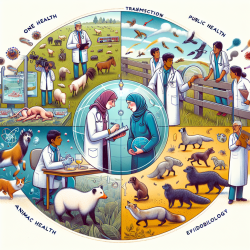Introduction
Autism Spectrum Disorder (ASD) is a complex neurodevelopmental condition characterized by challenges in social interaction, communication, and repetitive behaviors. Despite the increasing prevalence of ASD, its exact etiology remains elusive. The quest for early diagnosis and effective interventions is ongoing, with recent research focusing on the potential of salivary proteomics as a tool for identifying biomarkers associated with ASD.
Research Insights
A recent study, "Comparative two-dimensional polyacrylamide gel electrophoresis of the salivary proteome of children with autism spectrum disorder," utilized advanced proteomic techniques to compare the salivary proteins of children with ASD to those of typically developing peers. The study employed two-dimensional polyacrylamide gel electrophoresis (2D-PAGE) and nano liquid chromatography-tandem mass spectrometry (nanoLC-MS/MS) to identify proteins with differential expression in the saliva of children with ASD.
Key Findings
- Several proteins, including alpha-amylase and CREB-binding protein, were found to be down-regulated in children with ASD.
- Proteins such as proto-oncogene FRAT1 and Kinesin family member 14 were up-regulated in the ASD group.
- These proteins are linked to various biological pathways, including oxidative stress, immune response, and lipid metabolism, which are implicated in ASD pathophysiology.
Implications for Practice
The identification of these protein biomarkers offers promising avenues for early diagnosis and personalized treatment strategies for ASD. Practitioners in speech-language pathology and related fields can leverage these findings to enhance their understanding of ASD and tailor interventions more effectively.
Encouraging Further Research
While this study provides valuable insights, further research is necessary to validate these findings in larger cohorts and explore additional proteomic techniques. By expanding the scope of proteomic studies, we can deepen our understanding of ASD and improve outcomes for children affected by this condition.
Conclusion
The integration of salivary proteomics into ASD research represents a significant step forward in the quest for early diagnosis and targeted interventions. By identifying specific protein signatures associated with ASD, practitioners can develop more effective, individualized treatment plans that address the unique needs of each child.
To read the original research paper, please follow this link: Comparative two-dimensional polyacrylamide gel electrophoresis of the salivary proteome of children with autism spectrum disorder.










